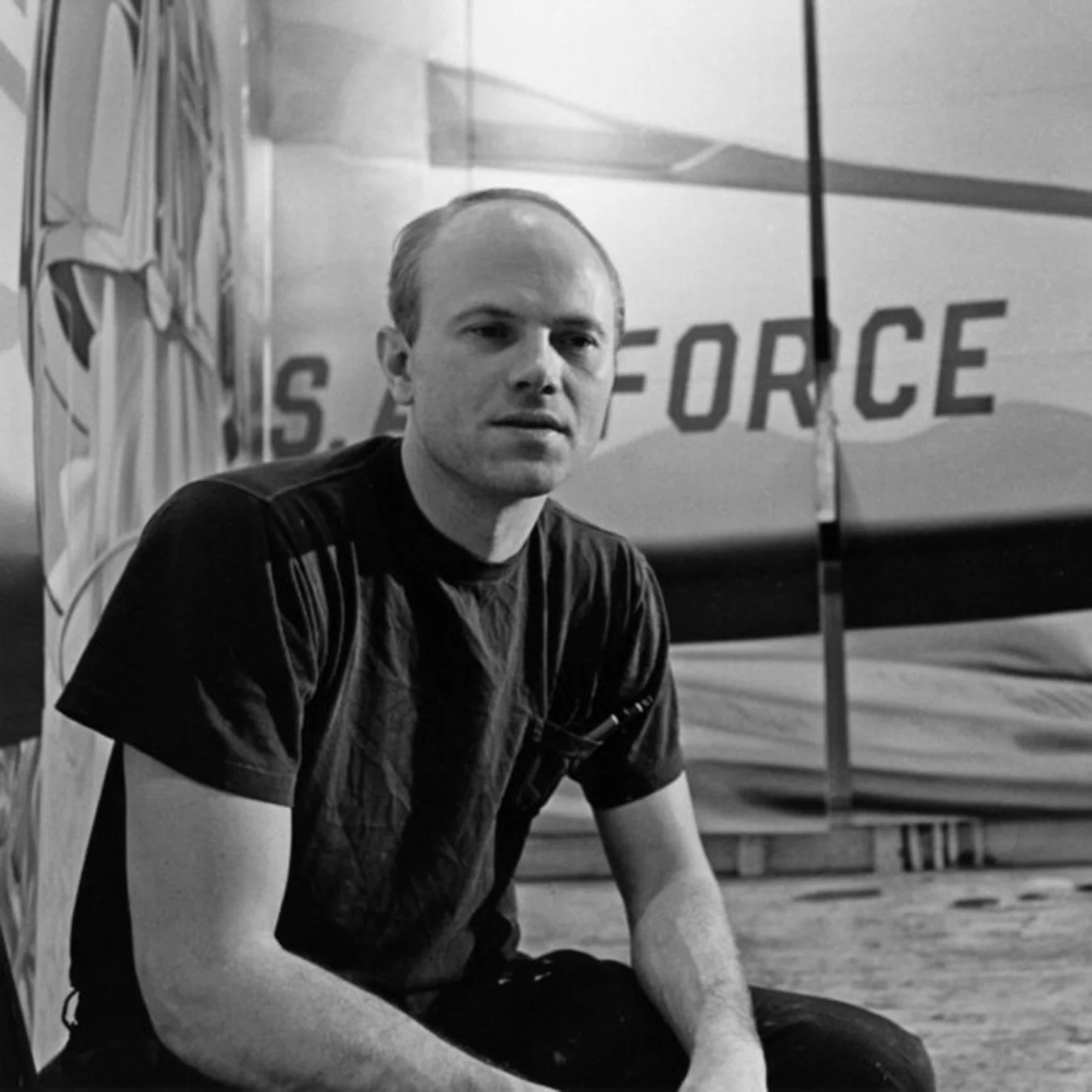


James Rosenquist came to prominence among New York School Pop Art figures like Roy Lichtenstein, Jasper Johns and Robert Rauschenberg is well known for his large-scale, fragmented works that bring the visual language of commercial painting onto canvas, from 1957-60, Rosenquist earned his living as a billboard painter. In his use of mass-produced goods and vernacular culture rendered in an anonymous style, Rosenquist's work recalls that of Andy Warhol, while his seemingly irrational, mysterious pictorial combinations owe a debt to Surrealism. His breakthrough work, the iconic F-111 (1965), 51 panels that total over 22 by 24 feet, in the collection of MoMA, juxtaposes an American fighter plane with a Firestone tire, garish orange tinned spaghettiand a young girl under a hair dryer.
While each Pop artist developed a distinct style, there were commonalities in their approaches to image-making that helped define the Pop art movement in the early 1960s: the use of commercial art techniquesand the depiction of popular imagery and everyday objects.
Drawing on his early experience as a billboard painter, Rosenquist culled imagery from print advertisements, photographsand popular periodicals and recombined these to create mysterious and bold compositions.
Utilizing the visual language of advertising, described by the late American curator Walter Hopps as 'visual poetry', his work has plumbed questions ranging from the economic, romanticand ecological to the scientific, cosmic and existential. Creating seminal new work over more than five decades, Rosenquist consistently expressed facile talent in painting, collage, drawingand printmaking. His work is included in major public and private institutionsand has been featured in solo exhibitions at the Solomon R. Guggenheim Museum, Museum of Modern Art, Walker Art Center, Whitney Museum of American Art, Guggenheim Museum Bilbao, The Menil Collection, The Museum of Fine Arts Houston, Denver Art Museum, Tretyakov Gallery, Museum Ludwig, Wallraf-Richartz Museumand other national and international institutions. In 2003, the Solomon R. Guggenheim Museum mounted a major retrospective of his works, which traveled to the Menil Collection, Museum of Fine Arts in Houstonand Guggenheim Museum Bilbao.